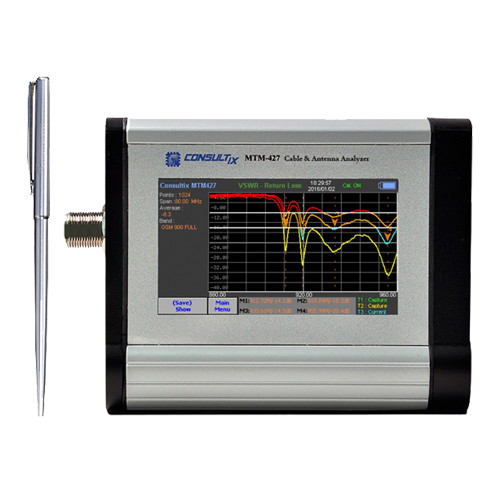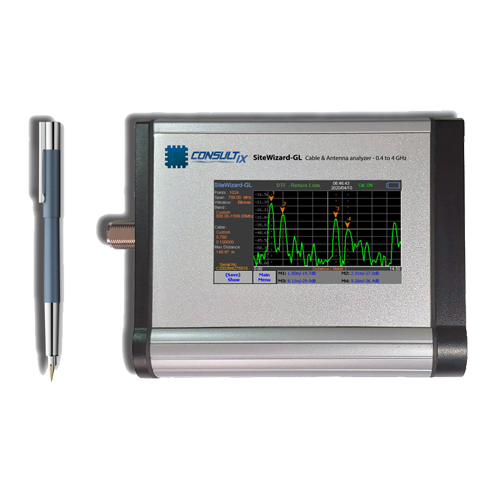![]() +971552579247 | Call Us: +971559994937
+971552579247 | Call Us: +971559994937
All You Need to Know About Cable and Antenna Analyzer
 All You Need to Know About Cable and Antenna Analyzer
All You Need to Know About Cable and Antenna Analyzer
Analyzing devices are an essential part of the connecting systems. The connection may be wireless or established physically. In either case, you need to have a reliable analyzing component to measure the involved components. Cable and antenna analyzers play a big part in testing a connection. The cable analyzers are a must where the connection gets established through cables and wires. It inspects the assembled unit of the wires and provides an output. While antenna analyzers or SWR analyzers measure the input impedance of antennas in an established system.
Need for analyzers
It is not possible to establish a reliable and well-functioning system of connections without analyzing. The input signals that pass through the physically established mediums or wireless connections require testing. The analyzing machines play a part in measuring the same. They check the input elements and provide a graphical output in most cases. It helps you to understand the existing conditions of the system. You can rightly verify if the system has any unintended connects or any open connections. It prevents the misfunctioning of the associated connection and helps in fixing it.
Cable antenna analyzers- In a nutshell
A base station system requires cable antenna analyzers to check the overall functioning. It checks the network in concern and identifies the shortcomings to fix the glitches. The experts rely on the accuracy of the output of these analyzing devices to establish a setup or testing it. It is a crucial part of the testing process as it prevents degradation or failures in the system in the latter stages. A field technician uses the analyzing device to identify the faults and losses. Troubleshooting the problematic concern gets easier with the reading of the said measuring device.
Testing essentialities: There are three primary reasons why you need a reliable cable antenna analyzer in your work. Field technicians largely rely on this for the following:
- Analyze the overall system in use
- Troubleshoot the concerns
- Maintain the system in use

The output of this analyzing device mainly focuses on three things: Return loss, cable loss and distance to fault or DTF. These devices point to the precise faults and ease the process. The components of the BSS are not easy to replace and needs exact identification for the same. Quality maintenance and maintaining the overall health of the established network is a must. It is due to this, why testing and measuring is so important.
- FDR technology
These modern analyzing devices use the Frequency Domain Reflectometry or FDR technology for their functioning. It includes the radio frequencies to read the data and locates the alteration demands in the system. You can find even the minor degradations and prevent larger system failures with this. For this, it is a commonly used device in cellular antenna systems.
- Return loss
Another major measuring component of the cable antenna analyzer is the return loss. By using this, the field technicians can assure the transmitting ability of the established connection. It helps in understanding the specifications of the system in use and identifies the existing issues. It eventually helps in preventing the overall affecting damages.
- Cable loss
Loss of signal through the cables is a major worrying concern for the field technicians. It is especially important to identify during the installation phase. The analyzers act as a reliable source to determine the loss. As these are portable, you can easily check the average cable loss of the frequency range.
- Distance to fault
These losses in the system degrade the overall performance largely. The distance to fault measurement of the analyzers helps in troubleshooting and accessing the exact faulty location. Field technicians compare the available data and monitor the alterations with time to derive DTF amplitudes. It certainly reduces the efforts to find the faults and eases the task of the engineers.
- Performance measurement
By interpreting the measuring components of the testing analyzer, it is possible to get an idea of the overall performance. The graphs that get displayed through the output spectrum plays a large part in characterizing the communication system. While return loss and cable loss concern the system's features, DTF is a step ahead to troubleshoot and monitor alterations.
Overall importance
Now that you know the testing essentialities and measuring components, it is evident that the device is highly essential. A practical testing component that provides reliable and precise output is a must for professional projects. It caters to all field essentialities without compromising on output accuracy. The primary reason behind the popularity is the fast-working capacity. It does not take much time to produce the required result. Light in weight yet suitable for the heavy testing necessities makes it apt for use.
Wrapping up
Reading this helps you in understanding the basic features of a cable antenna analyzer. It is an essential part of field-testing phases and exhibits optimal accuracy. If you need one for your professional needs, ensure that the device functions rightly. The proper functioning of it is necessary for establishing a reliable connection. Remember that the devices have distinct capacities, and thus the performance varies. Check the system requirements beforehand to determine the right capacity.
